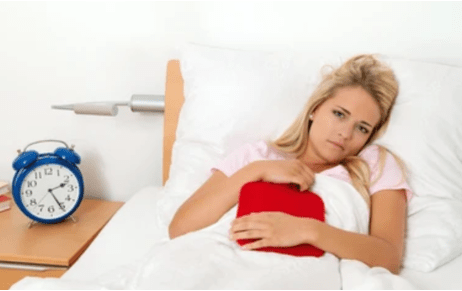INTRODUCTION When a woman experiences her period or menstruates, the menstrual cycle begins. A woman's…
Examination Guidelines for Pharmaceuticals Patents
There has been limited judicial consideration of how patent law applies to pharmaceutical inventions in India. Little specific guidance is available to patent examiners in assessing whether a particular pharmaceutical invention satisfies the requirements for patentability. The absence of judicial guidance in this area is problematic.
Indian Patent Office has published the Draft Guidelines on Pharmaceutical Patents to assist Indian patent examiners and patent applicants/patent agents in applying the Patents Act and Patent Rules to pharmaceutical inventions so that the Examiners and the Controllers adopt consistently uniform standards of examination. According to the Controller, a number of issues pertaining to product patenting are becoming clear through the decision of the Courts, and therefore there is a need to develop such guidelines incorporating the analysis of Courts, for the examination of pharmaceutical patents.
The Guidelines is intended as a reference guide for examiners/patent applicants/patent agents on all aspects of patent practice, including search and examination procedure, interpretation and application of the requirements of patentability under Indian law and relevant procedural provisions of the Patent Act, and practice and procedures in connection with patent applications filed under the PCT.
This article focuses on the important notable aspects of the Guidelines.
The Guidelines first of all categorizes the various kinds of claims the applications pertaining to pharmaceutical and allied subject matters can have:
Claims of Pharmaceutical Inventions
Patent application pertaining to pharmaceutical and allied subject matters comprises the claims relating to the following subject matters, but not limited to:
I. Product claims:
i. Pharmaceutical substances;
a. New Chemical Entities;
b. Formulations/Compositions;
c. Combinations/dosage/dose;
d. New forms of a known substance such as;
Salts, Ethers and Esters; Polymorphs; Solvates, including hydrates; Clathrates; Stereoisomers; Enantiomers; Metabolites and pro-drugs; Conjugates; Pure forms; Particle size; Isomers and mixtures thereof; Complexes; Derivatives of known substance; and
ii. Kits;
iii. Product-by-process.
II. Claims for process/method of manufacturing;
III. Claims related to a new property, new use of a known substance or use claims, including second indications;
IV. Claims for a method of treatment and/or diagnosis of human beings and animals;
V. Claims related to selection inventions.
Assessment of Novelty, Inventive Step, and Industrial applicability
The assessment of novelty, inventive step, and industrial applicability is similar to the patents filled in other technical domains. A claimed invention will be granted a patent only if the invention is a product and/or process.
Claimed inventions relating to the second use of already known compounds does not make the substance novel and/or inventive.
In product-by-process claims, the applicant has to show that the product defined in process terms, is not anticipated or rendered obvious by any prior art product. In other words, the product must qualify for novelty and inventive steps irrespective of the novelty or inventive step of the process.
A large number of illustrative examples are provided for the determination of novelty and inventive steps for various kinds of claimed inventions including compound (Markush) claims, combination/composition claims, product-by-process claim.
More clarifications on obviousness determination are provided, for example, the skilled person needs to eliminate hindsight analysis, reasonable expectation of success must be embedded which could motivate a skilled person, surprising (enhanced) effects cannot provide inventive step if the solution if from a limited set of alternatives which is obvious to try.
Inventions not patentable
Pharmaceutical related inventions not patentable under Section 3 (b), Section 3 (c), Section 3(d), Section 3 (e), Section 3 (i) are also discussed in the guidelines.
The patentability of pharmaceutical-related inventions under section 3(d) has invoked many debates in the recent past and is discussed in detail. According to Section 3(d), an incremental invention, based upon an already known substance, having established medicinal activity shall be deemed to be treated as the same substance, and shall fall foul of patentability, if the invention in question fails to demonstrate significantly improved therapeutic efficacy with respect to that known compound. While interpreting what is “efficacy”, the Hon’ble Supreme Court held that in the context of the pharmaceutical patenting, the “efficacy” should be understood as “therapeutic efficacy”. Also, the Supreme Court explained what would mean a “new product” in the context of Section 3(d): “…………the new product in chemicals and especially pharmaceuticals may not necessarily mean something altogether new or completely unfamiliar or strange or not existing before”. According to the Supreme Court, whether or not an increase in bioavailability leads to an enhancement of therapeutic efficacy in any given case must be specifically claimed and established by research data. However, it is important to note that Supreme Court has clarified further that the test of Section 3(d) of the Act does not bar patent protection for all incremental inventions of chemical and pharmaceutical substances. The term “combination” as appearing in Section 3(d) has been explained by IPAB as “The combination mentioned in the Explanation can only mean a combination of two or more of the derivatives mentioned in the Explanation or combination of one or more of the derivatives with the known substance which may result in a significant difference with regard to the efficacy.
A number of illustrative examples are provided for sections 3d, 3e, 3i, etc..
Sufficiency of description, clarity, and support of the claims:
Sufficiency of description, best mode, clarity, and support of the claims are included in sections 10(4) and 10(5) of the Patent Act. The Guidelines provide various illustrative examples on the sufficiency of microorganisms included inventions, biological material included invention.
If the invention relates to a biological material which is not possible to be described in a sufficient manner and which is not available to the public, the application shall be completed by depositing the material to an International Depository Authority (IDA) under the Budapest Treaty.
The Guidelines further explain that non-technical terms like trademarks should be discouraged and the applicant should be asked to replace them with equivalent technical terms.
In regard to the Markush claims, the Guidelines explain that claims with Markush formulas may cover innumerable compounds and may be overbroad, thus leading to the conclusion of inconsistency between description and claims. Also, such formulas can lead to the question of the plurality of distinct inventions. Compounds represented by different alternatives should have a technical interrelationship. Where a single claim defines alternatives of a Markush group, the requirement of a technical interrelationship is considered met when the alternatives are of a similar nature.
Further, the functional claims (wherein the substances are defined in terms of their physiological properties/results) should be discouraged.
Unity of Invention
When there is a group of inventions in a specification they should be linked by a single concept or there should be a technical relationship among the claimed inventions, which makes the inventive contribution over the prior art.
Markush claims the unity of invention shall be considered to be met when the alternatives claimed are of a similar nature. The Markush group of alternative chemical compounds can be regarded as being of a similar nature is subjected to the fulfillment of the following conditions:
a)They have a common property or activity,
b) All of the alternatives have a common structure, which is a significant structural element shared by all of the alternatives
The Guidelines also clarify that wherever there will be a conflict between the Guidelines and the Patent Act, the provisions of the Act will prevail.
About the Author: Ms. Harsha Rohatgi, Patent Associate, Khurana & Khurana, Advocates, and IP Attorneys and can be reached at [email protected]



